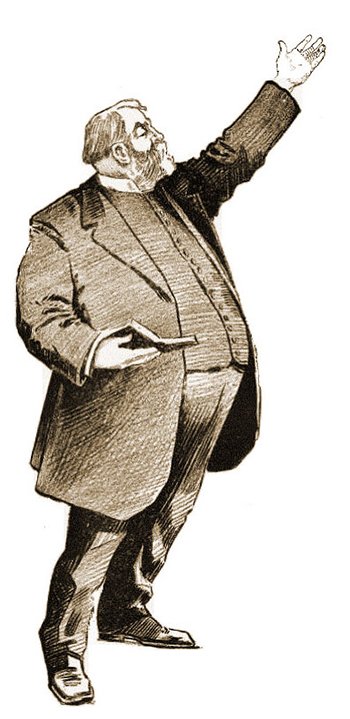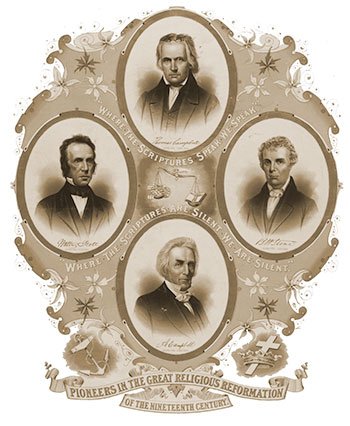1830s-1840s Methodist Episcopal Church Revivals

Methodist Circuit Rider
Antecedents to Revival
The Methodist Episcopal Church (MEC) traces its roots to the First Great Awakening and the evangelical revival movement within the Church of England led by John Wesley1. Wesley emphasized the experience of being born again and the possibility of achieving Christian perfection in this life2. Three teachings formed the foundation of the Christian faith during this era: (1) all people are by nature “dead in sin” and therefore “children of wrath,” (2) they are “justified by faith alone,” and (3) faith produces inward and outward holiness3.
Early Methodists were often drawn from the lower social classes, including slaves, poor whites, and the “middling people” such as artisans and shopkeepers1. Methodism’s condemnation of slavery and the worldliness of the upper classes resonated with these groups1.
Following the American Revolution, the MEC was formally established in 1784 at the Christmas Conference in Baltimore4. Two significant figures emerged as leaders: Thomas Coke and Francis Asbury5. Asbury, in particular, played a crucial role in shaping early American Methodism by adapting Wesley’s principles to the American context2. He supported the American Revolution and the new republic, unlike Wesley, and embraced the concept of itinerant ministry, where circuit riders travelled extensively to preach and establish Methodist societies2.
Early Missionary Efforts
Even before the revivals of the 1830s and 1840s, the Methodist Episcopal Church demonstrated a commitment to missionary work. In 1819, the first denominational mission society of the MEC was founded1. This society, organized by a group of preachers led by Nathan Bangs, was inspired by the work of John Stewart, a mixed-race preacher who had been working among the Wyandotte people in Ohio since 18161. This early focus on missions laid the groundwork for the increased missionary activity that would characterize the revival period.
Camp Meetings and Early Methodist Practices
During this era, Methodists in Virginia played a crucial role in developing and refining the “camp meeting,” a form of revivalism that had originated in Kentucky and Tennessee4. Camp meetings involved people gathering from surrounding areas to camp on church grounds for several days of religious services, fellowship, and spiritual renewal4. These gatherings became a central feature of Methodist practice and contributed significantly to the growth and fervor of the revivals.
Internal Tensions and Divisions
By the 1820s, the MEC had become the largest denomination in America3. However, internal tensions were brewing. The church faced growing divisions over issues of race and slavery2. While early Methodism had a strong anti-slavery stance, as the church grew in the South, many leaders became less willing to condemn slavery3. This led to the formation of separate African American denominations, such as the African Methodist Episcopal Church (AME) in 1816 and the African Methodist Episcopal Zion Church (AMEZ) in 18211.
Another source of tension was the increasing desire for a more democratic approach to church governance6. Some members felt that the bishops held too much power and that the laity should have more representation. This led to the formation of the Methodist Protestant Church in 18306.
These tensions, combined with the social and economic changes sweeping across America in the early 19th century, created a fertile ground for religious revival7. The revivals of the 1830s and 1840s were a response to these challenges, a period of renewal and re-commitment to the core values of Methodism.
What Sparked the Revivals?
While pinpointing the exact cause of the revivals is difficult, several factors contributed to their emergence. The Second Great Awakening, a broader religious movement that swept through America from the 1790s to the 1840s, provided the context for the MEC revivals3.
This period saw a surge in religious enthusiasm across various denominations, characterized by emotional preaching, revivals, and camp meetings5. Notably, the Methodist Episcopal Church experienced remarkable growth during this time, with membership doubling between 1840 and 18429.
Within the MEC, the revivals were partly fuelled by a desire to address the growing internal divisions and reaffirm the church’s commitment to spiritual growth and social activism3. The increasing emphasis on personal experience and emotional engagement in religion also played a role3. Women played a significant role in these revivals, making up the majority of converts and even preaching publicly, challenging traditional gender roles7.
Furthermore, the revivals were influenced by the social and economic changes of the time. The rise of industrialization, urbanization, and westward expansion created a sense of uncertainty and anxiety among many Americans7. The revivals offered a source of comfort, community, and meaning in a rapidly changing world8.
Key Leaders of the Revivals
Several individuals emerged as prominent leaders during the MEC revivals. While there were many preachers and evangelists who contributed to the movement, some notable figures include:
- Charles Finney: Although a Presbyterian minister, Finney’s influence extended to the Methodist Episcopal Church8. He was a powerful preacher who emphasized personal conversion and social reform7. His “new measures,” which included protracted meetings, the “anxious bench,” and public prayer for individuals by name, were adopted by some Methodist preachers8. Finney’s approach to revivalism was characterized by a strong emotional appeal and an emphasis on the individual’s ability to choose salvation7.
- Asahel Nettleton: A Congregationalist minister, Nettleton represented a more cautious and doctrinal approach to revivals8. He emphasized the importance of careful preparation, theological orthodoxy, and the role of the Holy Spirit in conversion, contrasting with Finney’s more human-centered approach8. This tension between emotionalism and doctrinal soundness reflected broader debates within American Protestantism during this era.
- James Caughey: An Irish-American evangelist, Caughey was known for his powerful preaching and his emphasis on the experience of Christian perfection10. He held numerous revivals in England and the United States, contributing to the growth of the holiness movement within Methodism10.
- Methodist Circuit Riders: The circuit riders played a crucial role in spreading the revivals to the frontier regions7. These itinerant preachers traveled extensively, often on horseback, to reach scattered communities and hold camp meetings7. Their dedication and tireless efforts were instrumental in the growth of the MEC during this period.
Lasting Impact of the Revivals
The MEC revivals had a profound impact on the church and American society. Some of the key effects included:
- Church Growth: The revivals led to a significant increase in membership in the MEC11. Thousands of people converted to Methodism, and the church expanded its reach throughout the United States11.
- Increased Missionary Activity: The revivals fueled a surge in missionary zeal8. The MEC established new missions both domestically and abroad, spreading the Methodist message to new frontiers and cultures. This included sending the first overseas missionary to Liberia in 18331.
- Social Reform: The revivals contributed to a wave of social reform movements in America5. Methodists became actively involved in efforts to abolish slavery, promote temperance, improve education, and address social injustices8.
- Emphasis on Personal Piety and Holiness: The revivals reinforced the Methodist emphasis on personal piety, spiritual growth, and the pursuit of Christian perfection1. This emphasis on personal religious experience contributed to the rise of the holiness movement within Methodism, which sought a deeper relationship with God and the experience of sanctification1.
- Rise of New Institutions: The revivals spurred the creation of new institutions to support the growing church16. These included colleges, seminaries, publishing houses, and missionary societies16. These institutions played a vital role in educating Methodist clergy, disseminating religious literature, and organizing missionary efforts.
Timeline of Important Dates, Events, and People
| Date | Event/Person | Significance |
| 1784 | Christmas Conference | Formal establishment of the Methodist Episcopal Church in America. |
| 1784-1816 | Francis Asbury | Bishop Asbury’s leadership shapes early American Methodism and its focus on itinerant ministry. |
| 1816 | AME Church founded | Formation of the African Methodist Episcopal Church due to racial segregation within the MEC. |
| 1819 | Missionary Society founded | The first denominational mission society of the MEC is established. |
| 1821 | AMEZ Church founded | Formation of the African Methodist Episcopal Zion Church, another African American denomination. |
| 1830 | Methodist Protestant Church founded | A group splits from the MEC over issues of church governance and lay representation. |
| 1830-1840s | Charles Finney | Presbyterian revivalist whose “new measures” influence some Methodist preachers. |
| 1830-1840s | Asahel Nettleton | Congregationalist revivalist who emphasizes doctrinal soundness in revivals. |
| 1830-1840s | James Caughey | Irish-American evangelist who promotes the experience of Christian perfection. |
| 1830-1840s | Methodist Circuit Riders | Itinerant preachers who spread the revivals to frontier regions. |
| 1830s-1840s | Camp Meetings | Large outdoor religious gatherings that play a key role in the revivals. |
| 1833 | First overseas missionary | The Missionary Society sends its first overseas missionary to Liberia. |
| 1835 | Finney’s Lectures on Revivals of Religion published | Finney’s influential book on revivalism is published. |
| 1840-1842 | Peak of the Revivals | Methodist Episcopal Church membership doubles during this period. |
Conclusion
The Methodist Episcopal Church Revivals of the 1830s and 1840s were an amazing act of God in the history of American Methodism and American society as a whole. They were fuelled by a complex interplay of factors, including the desire for spiritual renewal, the need to address social ills and internal divisions, and the social and economic changes of the time. The revivals led to a significant increase in church membership, a surge in missionary activity, and a renewed emphasis on personal piety and holiness.
These revivals also contributed to a broader wave of social reform movements in America, with Methodists actively involved in efforts to abolish slavery, promote temperance, and address social injustices. In this way, the revivals laid the groundwork for later social justice movements in the United States.
Furthermore, the revivals highlighted the ongoing tension between emotionalism and doctrinal orthodoxy in American Protestantism. The contrasting approaches of revivalists like Charles Finney and Asahel Nettleton exemplified this tension, which continues to shape religious discourse today.
The Methodist Episcopal Church Revivals left a lasting impact on the religious and social landscape of the nation. They shaped the future of the Methodist Episcopal Church, contributing to its growth, its emphasis on social action, and its role in American society. The legacy of these revivals can still be seen in the Methodist Church today and in the broader landscape of American Christianity.
Works cited
- Methodist Episcopal Church – Wikipedia, accessed on January 31, 2025, https://en.wikipedia.org/wiki/Methodist_Episcopal_Church
- Methodism | History, Beliefs, & Organization – Britannica, accessed on January 31, 2025, https://www.britannica.com/topic/Methodism
- History of Methodism in the United States – Wikipedia, accessed on January 31, 2025, https://en.wikipedia.org/wiki/History_of_Methodism_in_the_United_States
- Methodists in Early Virginia, accessed on January 31, 2025, https://encyclopediavirginia.org/entries/methodists-in-early-virginia/
- Second Great Awakening – Wikipedia, accessed on January 31, 2025, https://en.wikipedia.org/wiki/Second_Great_Awakening
- UMC Denominational History – STH: Special Collections – Research at Boston University, accessed on January 31, 2025, https://library.bu.edu/sthspecialcollections/umcdenom
- The Second Great Awakening (1800-1835) | United States History I – Lumen Learning, accessed on January 31, 2025, https://courses.lumenlearning.com/wm-ushistory1/chapter/the-second-great-awakening/
- Religious Revivals and Revivalism in 1830s New England | Teach US History, accessed on January 31, 2025, https://www.teachushistory.org/second-great-awakening-age-reform/articles/religious-revivals-revivalism-1830s-new-england
- Overview of Revivals 2, accessed on January 31, 2025, https://thecomingrevival.com/general-overview-of-revivals-2/
- 19th Century Revivalists – Revival Library, accessed on January 31, 2025, https://revival-library.org/heroes/19th-century-revivalists/
- Third Great Awakening 1820-1840 – Revival Library, accessed on January 31, 2025, https://revival-library.org/histories/1820-1840-the-third-great-awakening/



